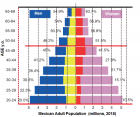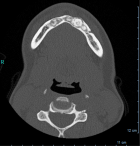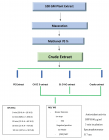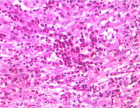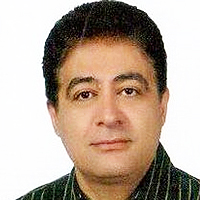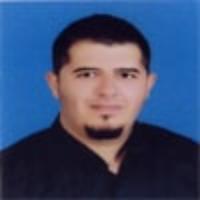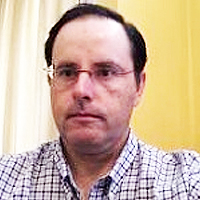Abstract
Research Article
Measurement of background ionizing radiation in the federal university of technology owerri, Nigeria using calibrated digital geiger counter
Eke BC* and Emelue HU
Published: 25 May, 2020 | Volume 3 - Issue 1 | Pages: 070-074
The measurement of the natural ionizing radiation in the Federal University of Technology Owerri, Nigeria was carried out using a well calibrated Digital Geiger Muller counter models GCA – 04w. Measurements were taken randomly in thirty (30) diff erent locations outside the building and thirty (30) locations inside diff erent buildings in the University. Results obtained for outdoor Dose rate ranges from 0.07 μSv/hr to 0.23 μSv/hr with a mean value of 0.144 μSv/hr. While the result for the indoor dose rate ranges from 0.08 μSv/hr to 0.21 μSv/hr with a mean of 0.14 μSv/hr. The highest value recorded for the outdoor radiation is from the university front gate which is .023μSv/hr. While the highest value recorded inside the buildings is from the School of Agriculture and Agricultural Technology (SAAT) which is 0.21 μSv/hr. All these values are lower than the world safely limits of 0.247 μSv/hr. This shows that the risk of ionizing radiation on the staff and students of the Federal University of Technology is minimal.
Read Full Article HTML DOI: 10.29328/journal.ijpra.1001025 Cite this Article Read Full Article PDF
References
- Shetty PK, Narayana Y. Variation of radiation level and radionuclides enrichment in high background area. J Environ Radio activity, 2010: 101; 1043-1047. PubMed: https://pubmed.ncbi.nlm.nih.gov/20833457/
- United Nations Scientifi c Committee on the Eff ect of Atomic Radiation UNSCEAR. Sources and Eff ects of Ionizing Radiation UNSCEAR Report 2008.
- Taskin H, Karavus M, Ay P, Topuzoglu A, Hindiroglu S, et al. Radionuclide Concentrations in soil and lifetime cancer risk due to the gamma radioactivity in Kirklareli, Turkey. J. Environ. Rad. 2009; 100:49-53. PubMed: https://pubmed.ncbi.nlm.nih.gov/19038480/
- Obed RI, Farai IP, Jibiri NN. Population Dose Distribution due to Soil Radioactivity Concentration Levels in 18 cities across Nigeria. J Radiol Prot. 2005; 25: 305–312. PubMed: https://pubmed.ncbi.nlm.nih.gov/16286693/
- Eke BC, Emelue HU. Evaluation of Radiation Emission and Associated Health Hazards from Refuse Dumps in the Federal University of Technology Owerri, Nigeria. Current J Appl Sci Technol. 2018; 31: 1 – 9.
- Jwanbot DI. Izam MM, Gambo M. Measurement of indoor background ionizing radiation in some Science Laboratories in Jos and Ogbomosho. Nigerian J Phy. 2013; 16: 76 – 78.
- Arogunjo AM, Farai IP, Fuwape IA. Dose Rate Assessment of Terrestrial Gamma Radiation in the Delta Region of Nigeria. Radiation Protection Dosimetry. 2004: 108; 73- 77. PubMed: https://pubmed.ncbi.nlm.nih.gov/14974607/
- Brenner J. David, Sachs K. Rainer. Estimating radiation – induced cancer risk at very low doses: Rational for using a linear no – threshold approach. Radiat Environ Biophys. 2006; 44: 253–256. PubMed: https://pubmed.ncbi.nlm.nih.gov/16470411/
- Attallah MF, Awwad NS, Aly HF. Environmental radioactivity of TENORM waste produced from petroleum industry in Egypt: Review on characterization and treatment hot laboratories and waste management center, Atomic Energy Authority, Cairo, Egypt. 2002.
- Radalert 100. Nuclear Radiation Monitor Operating Manual. 12. 2007.
- Zarie KA, Al Mugren KS. Measurement of natural radioactivity and assessment of radiation hazard in soil samples from Tayma area (KSA). Isotope Radia Res. 2010; 42: 1– 9.
- Okoye PC, Avwiri GO. Evaluation of Background Ionizing Radiation Levels of Braithwaite Memorial Specialist Hospital Port Harcourt, River State. American J Scientifi c Industral Res. 2013
Figures:
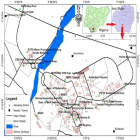
Figure 1
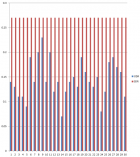
Figure 2
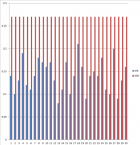
Figure 3
Similar Articles
-
High energy HF (DF) lasersVictor V Apollonov*. High energy HF (DF) lasers. . 2018 doi: 10.29328/journal.ijpra.1001001; 1: 001-016
-
Magnetohydrodynamic CNTs Casson Nanofluid and Radiative heat transfer in a Rotating ChannelsZahir Shah*,Abdullah Dawar,Saeed Islam,Muhammad Idress,Waris Khan. Magnetohydrodynamic CNTs Casson Nanofluid and Radiative heat transfer in a Rotating Channels. . 2018 doi: 10.29328/journal.ijpra.1001002; 1: 017-032
-
Sounding procedure for characterization of big fusion reactor chambers by means of a compact neutron source with a nanosecond pulse durationVA Gribkov*,B Bienkowska,S Jednorog,M Paduch,Tomaszewski. Sounding procedure for characterization of big fusion reactor chambers by means of a compact neutron source with a nanosecond pulse duration. . 2018 doi: 10.29328/journal.ijpra.1001003; 1: 033-051
-
Gravitation - Flat Power FieldSA Orlov*. Gravitation - Flat Power Field. . 2018 doi: 10.29328/journal.ijpra.1001005; 1: 067-073
-
Moving space-matter as the basis of the intelligence in the Physical WorldBoris S Dizhechko*. Moving space-matter as the basis of the intelligence in the Physical World. . 2019 doi: 10.29328/journal.ijpra.1001007; 2: 001-003
-
Nanotechnology to improve the biofouling and corrosion performance of marine paints: from lab experiments to real tests in seaGeorge Kordas*. Nanotechnology to improve the biofouling and corrosion performance of marine paints: from lab experiments to real tests in sea. . 2019 doi: 10.29328/journal.ijpra.1001012; 2: 033-037
-
Biological membranes: The laboratory of fundamental physicsSamo Kralj*,Mitja Kralj. Biological membranes: The laboratory of fundamental physics. . 2019 doi: 10.29328/journal.ijpra.1001013; 2: 038-040
-
Biodegradation of gold and platinum implants in rats studied by electron microscopyLudwig Jonas*,Hendrik Kosslick,Hermann Sauer,Tino Just,Ursula Vick,Gerhard Fulda. Biodegradation of gold and platinum implants in rats studied by electron microscopy. . 2019 doi: 10.29328/journal.ijpra.1001014; 2: 041-048
-
Modeling of A.I based Inhalation for Advanced Life Support System DevelopmentMd. Sadique Shaikh*,Tanvir Begum. Modeling of A.I based Inhalation for Advanced Life Support System Development. . 2019 doi: 10.29328/journal.ijpra.1001015; 2: 049-050
-
Bio-moleculear thermal oscillator and constant heat current sourceR Panahinia*,S Behnia. Bio-moleculear thermal oscillator and constant heat current source. . 2019 doi: 10.29328/journal.ijpra.1001016; 2: 051-055
Recently Viewed
-
Sensitivity and Intertextile variance of amylase paper for saliva detectionAlexander Lotozynski*. Sensitivity and Intertextile variance of amylase paper for saliva detection. J Forensic Sci Res. 2020: doi: 10.29328/journal.jfsr.1001017; 4: 001-003
-
Extraction of DNA from face mask recovered from a kidnapping sceneBassey Nsor*,Inuwa HM. Extraction of DNA from face mask recovered from a kidnapping scene. J Forensic Sci Res. 2022: doi: 10.29328/journal.jfsr.1001029; 6: 001-005
-
The Ketogenic Diet: The Ke(y) - to Success? A Review of Weight Loss, Lipids, and Cardiovascular RiskAngela H Boal*, Christina Kanonidou. The Ketogenic Diet: The Ke(y) - to Success? A Review of Weight Loss, Lipids, and Cardiovascular Risk. J Cardiol Cardiovasc Med. 2024: doi: 10.29328/journal.jccm.1001178; 9: 052-057
-
Could apple cider vinegar be used for health improvement and weight loss?Alexander V Sirotkin*. Could apple cider vinegar be used for health improvement and weight loss?. New Insights Obes Gene Beyond. 2021: doi: 10.29328/journal.niogb.1001016; 5: 014-016
-
Maximizing the Potential of Ketogenic Dieting as a Potent, Safe, Easy-to-Apply and Cost-Effective Anti-Cancer TherapySimeon Ikechukwu Egba*,Daniel Chigbo. Maximizing the Potential of Ketogenic Dieting as a Potent, Safe, Easy-to-Apply and Cost-Effective Anti-Cancer Therapy. Arch Cancer Sci Ther. 2025: doi: 10.29328/journal.acst.1001047; 9: 001-005
Most Viewed
-
Evaluation of Biostimulants Based on Recovered Protein Hydrolysates from Animal By-products as Plant Growth EnhancersH Pérez-Aguilar*, M Lacruz-Asaro, F Arán-Ais. Evaluation of Biostimulants Based on Recovered Protein Hydrolysates from Animal By-products as Plant Growth Enhancers. J Plant Sci Phytopathol. 2023 doi: 10.29328/journal.jpsp.1001104; 7: 042-047
-
Sinonasal Myxoma Extending into the Orbit in a 4-Year Old: A Case PresentationJulian A Purrinos*, Ramzi Younis. Sinonasal Myxoma Extending into the Orbit in a 4-Year Old: A Case Presentation. Arch Case Rep. 2024 doi: 10.29328/journal.acr.1001099; 8: 075-077
-
Feasibility study of magnetic sensing for detecting single-neuron action potentialsDenis Tonini,Kai Wu,Renata Saha,Jian-Ping Wang*. Feasibility study of magnetic sensing for detecting single-neuron action potentials. Ann Biomed Sci Eng. 2022 doi: 10.29328/journal.abse.1001018; 6: 019-029
-
Pediatric Dysgerminoma: Unveiling a Rare Ovarian TumorFaten Limaiem*, Khalil Saffar, Ahmed Halouani. Pediatric Dysgerminoma: Unveiling a Rare Ovarian Tumor. Arch Case Rep. 2024 doi: 10.29328/journal.acr.1001087; 8: 010-013
-
Physical activity can change the physiological and psychological circumstances during COVID-19 pandemic: A narrative reviewKhashayar Maroufi*. Physical activity can change the physiological and psychological circumstances during COVID-19 pandemic: A narrative review. J Sports Med Ther. 2021 doi: 10.29328/journal.jsmt.1001051; 6: 001-007

HSPI: We're glad you're here. Please click "create a new Query" if you are a new visitor to our website and need further information from us.
If you are already a member of our network and need to keep track of any developments regarding a question you have already submitted, click "take me to my Query."







